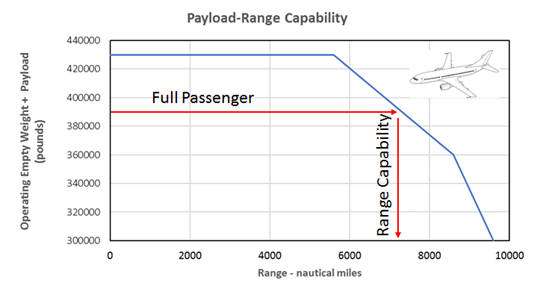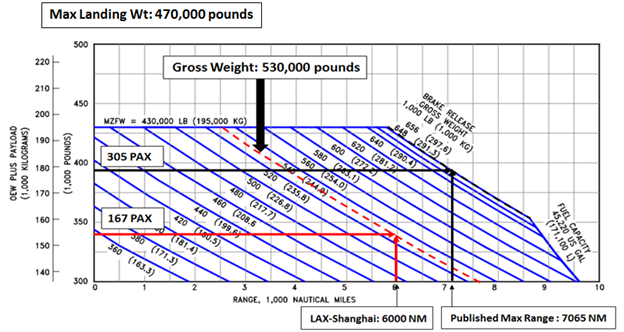By Tenzin Choephel*
A few days ago, a rather bizarre incident unfolded over the skies of Los Angeles, California. A Delta Airlines flight that had just departed from Los Angeles International Airport and bound for Shanghai, China had an issue soon after takeoff and was forced to return to the airport. In what became quite a spectacle to watch, the airplane dumped a huge amount of fuel that showered down on a number of schools that fell along its flight path. News media channels aired footages of school kids exposed to the jet fuel being treated by paramedics while dozens of fire trucks hovered around the school campuses. Why did they dump fuel anyway? And was it a right decision to dump?
Every commercial airplane must adhere to what are called certified maximum takeoff and maximum landing weights that should not be exceeded. Maximum landing weight is primarily driven by the ability of the airplane to come to a full stop by the end of the runway and its landing gear system to safely touch down without sustaining any significant structural damage. If the airplane is too heavy and needs to land as soon as possible it is allowed to dump fuel after notifying the air traffic controller. Let us find out if the maximum landing weight would have been exceeded at the time of the emergency landing if they hadn’t dumped fuel. To do this we will have to estimate the total weight of the airplane at the moment just before landing.
The total weight or gross weight of the airplane is composed of the airplane’s operating empty weight, weight of passengers and baggage, and weight of fuel. Operating empty weight is a fancy word that includes the bare weight of the airplane plus the crew, food and water for passengers– it excludes the weights of passengers, baggage and fuel. We know from news reports that this flight was carrying only 167 passengers – it has the capacity to carry 305 passengers in total. This is probably an off-season for this route! To estimate how much fuel the airplane was carrying in its long journey to Shanghai we need to model the aerodynamics and engine performance of this airplane, which gets complicated. Instead, we will simply use information from what is called Airport Planning Manual (APM) for this airplane model, which is publicly available. You can easily-google search it.
The airplane in question is a Boeing 777-200ER, a model that is built by Boeing Co., an American airplane manufacturer. The APM says the maximum certified landing weight for this airplane model is 470,000 pounds. This weight may not be exceeded during any landing event. The operating empty weight is approximately 305,000 pounds according to Wikipedia. The APM also provides what is called a “payload-range” chart, shown below. This chart is a graphical representation of how far the airplane can fly with a given amount of payload (passenger plus baggage). On the x-axis is the range and on the y-axis is the “operating empty weight plus payload”. To find out the range for a given payload, one would calculate the total payload weight based on the number of passengers, add it to the operating empty weight. One would then draw a straight horizontal line across the chart corresponding to this weight. Where it interests the blue curve (or dashed blue curve if the certified maximum takeoff weight is lower than the design maximum takeoff weight), draw a vertical line down the chart. Where this vertical line intersects the range axis tells you how far the airplane can fly with this much payload.

Here is a summary of what we publicly know about B777-200ER:
Operating empty weight: 305,000 pounds (Wikipedia)
Maximum landing weight: 470,000 pounds
Maximum range @ full payload (305): 7065 nautical miles**
And here is a summary of what we publicly know about this Delta flight:
Los Angeles to Shanghai flight distance: 6000 nautical miles
Number of passengers onboard: 167 (this is about half of the full payload capacity of 305)
Our goal is to find out the total weight of the airplane at the time of the emergency so that we can check that number against the maximum certified landing weight. In order to do that we will use the payload-range chart for B777-200ER as shown below.

Source: Boeing Airport Planning Manual
Now, to find out the gross weight, having a rough idea of the operating empty weight and passenger load, we need to find out how much fuel the airplane was carrying. This is hard to do unless we have a fairly accurate computational model of the airplane. But, using publicly available information such as the payload-range chart above, we can use a simple trick to approximate the total weight, and indirectly the fuel load.
We will first approximate the “empty weight plus payload” for the maximum published range of 7065 nautical miles. Enter the chart at that range and draw a vertical line until it intersects the outermost diagonal line. From there, draw a horizontal line to the y-axis. It intersects at about 390,000 pounds. Subtract the operating empty weight of 305,000 pounds from it and you have the total payload (passenger plus baggage) of 85,000 pounds. Since this flight was carrying about half the payload, the “operating empty weight plus payload” is approximately 305,000 plus 85,000/2 = 347,500 pounds. We will draw a horizontal line across the chart at this level. Now, since we know that the intended range of this flight was about 6000 nautical miles, we draw a vertical line through this range. These two lines interest at the diagonal line for gross weight of about 530,000 pounds.
What this means is that for a flight from Los Angeles to Shanghai carrying 167 passengers with their baggage, the gross takeoff weight of the airplane including fuel will be 530,000 pounds. Let us assume that by the time the pilots decided to return, about 3000 pounds of the fuel had been burned. This reduces the total weight to 527,000 pounds. Now this weight is in excess of the maximum certified landing weight of 470,000 pounds! If the flight would have continued and eventually landed in Shanghai, the airplane would have burned most of the fuel and the total weight would have ended up at a safe value below the landing weight limit, and everyone is happy. However, this airplane needed to shed about 57,000 pounds of weight to be able to land safely. They probably dumped about 8155 gals of jet fuel before safely landing!
Was that a right decision? Yes, from both certification and operational safety point of views. What a waste of fuel? Well of course, but the cost of landing overweight would have cost Delta more. With today’s jet fuel price of 188 cents/gal, they dumped about $15,331 worth of fuel. Had they landed without dumping fuel, they would have had to pull this aircraft out of revenue service immediately and sent for maintenance which would cost them a lot more in terms of both maintenance cost and lost revenue. Worst case scenario would be a failure of the landing gear and potentially compromising the safety of the passengers. One could argue that at least the pilots could have dumped the fuel over the ocean rather then over populated areas. True! But we will not know how urgent the situation was until the Federal Aviation Authority comes out with its investigative report. As for the poor school kids, if there is anything like “dancing in the jet fuel”, there it was!
* Sr. Aerospace Engineer at Pratt & Whitney, USA
** nautical mile is a unit of flight distance often used in airplane operations. 1 nautical mile is about 1.15 mile.

